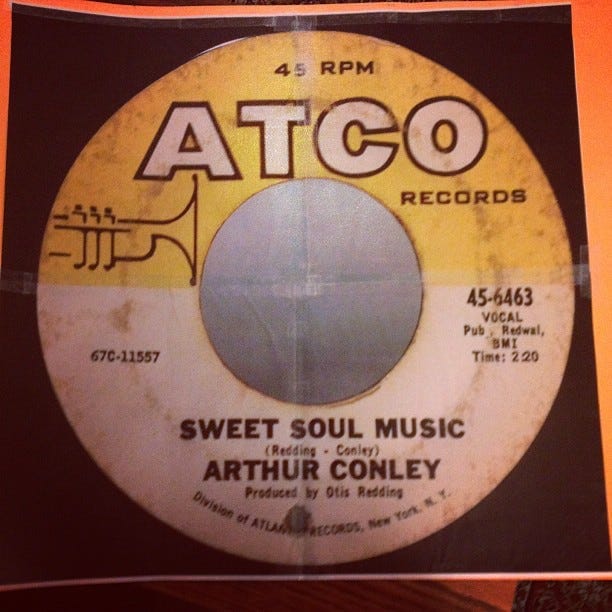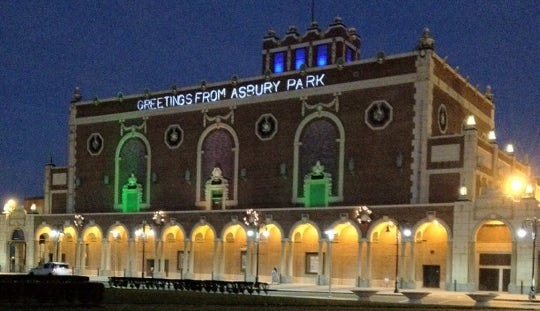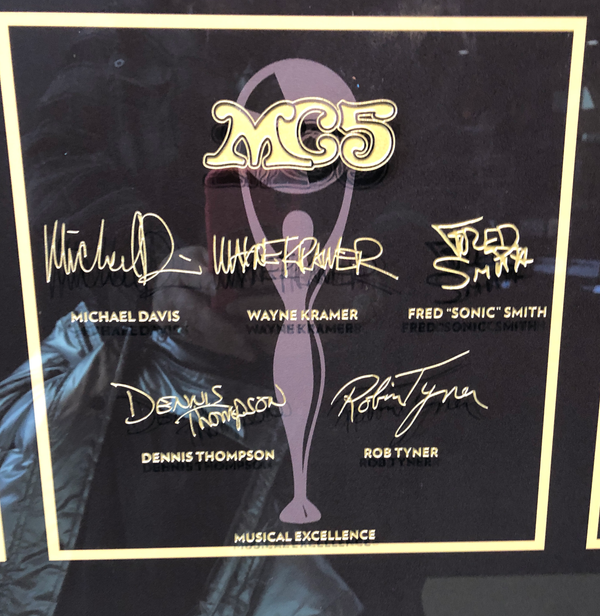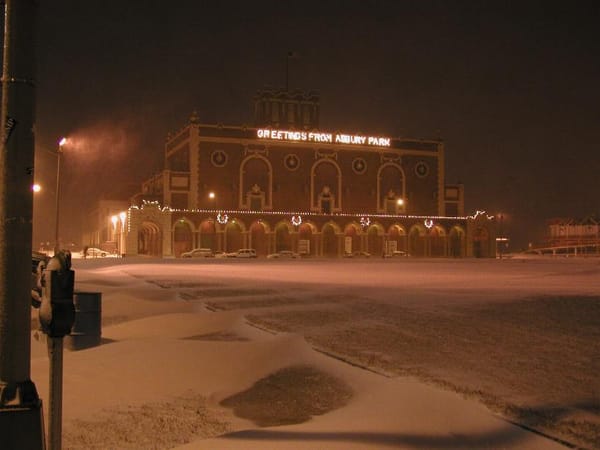Three Minute Record: Arthur Conley, "Sweet Soul Music"
“DO YOU LIKE GOOD MUSIC?”

Welcome to Three Minute Record, the edition of this newsletter where we dive into Bruce Springsteen’s best cover versions. You can read more about the purpose of this exercise here and see other volumes here.
Arthur Conley was a protege of both Sam Cooke and Otis Redding. Can you imagine that, being so talented that two of the greatest singers who ever existed picked you out of nowheresville and wanted to work with you? Sam discovered him first at the age of 16, and offered him a spot on tour. Arthur declined, wanting to finish school first. But then Otis saw him singing one night once he’d finished high school, and promptly snapped him up for his own Jotis label. By that time, we’d already lost Sam.
“Sweet Soul Music” was recorded at the beginning of 1967 at FAME Recording Studios in Muscle Shoals, Alabama. It’s hard to listen to it and not automatically put it in the Stax bucket; to be fair, at that time, Stax was so busy that FAME picked up the overflow. That’s not disrespecting FAME by any means -- it’s only a couple of hours from Memphis and it was basically still in the extended family, at least from a vibe and a sound and a mindset. Otis produced “Sweet Soul Music,” Jimmy Johnson -- the co-founder of FAME, who was the usual guitarist there -- engineered it, and Otis played guitar on it. But Otis was the producer; this was his vision. But we’d lose him too by year’s end.
The songwriting credits on “Sweet Soul Music” are Otis Redding, Arthur Conley, and depending on what year the record you are holding was printed, Sam Cooke. That’s because Otis “borrowed” “Sweet Soul Music” from Cooke’s “Yeah Man,” which literally opens with the same line: “Do you like good music?” It’s a different vibe but Sam Cooke was a different vibe. Otis settled up with the administrator of Sam Cooke’s catalog in exchange for money, publishing credit, and future consideration, because Otis had recorded Sam’s work before and would surely continue to.
“Sweet Soul Music” got as high as #2 on the Billboard RnB chart and got to #7 on the UK singles chart. Even though the record came out on Atco, which was an Atlantic subsidiary -- think Jerry Wexler here -- Arthur was part of the Stax-Volt revue that traveled to the UK and while the songs and the artists were popular in the States, they were utter superstars in England. The Beatles sent limos to the airport for the artists and wanted to set up some jam sessions, which regrettably never happened. Peter Guralnick, in his essential history of soul music -- which not accidentally is titled Sweet Soul Music -- tells us that the Fab Four did get to see Carla Thomas at the Bag O’ Nails and did the “We’re not worthy” bow when they met Steve Cropper.
Conley was on the tour to replace Percy Sledge, who had bowed out. He was a newcomer so he was lower on the bill alongside Otis, Sam & Dave, Carla Thomas, Percy Sledge, and Booker T & the MGs (who were of course the backing band). Otis hated going on after Sam & Dave because they were so high energy -- but he hated going on before them because they made him work harder. Can you imagine? Can you just imagine? When I was in my 20s and briefly living in London, I met a woman who saw Otis at the Ricky Tick Club in Brixton and when she told me that I felt a kind of insane all-consuming jealousy I had never ever felt before.
Otis Redding’s death in December of 1967 was horrible, tragic, soul-shattering. It was only a few years after Sam Cooke’s murder. His passing had an impact on the entire Stax-Volt family, from the musicians and singers and songwriters to everyone involved in the business. It was devastating. Arthur Conley was truly his protege and after his death, he was shunted into an ill-fitting role as heir apparent, which no one was ever going to be. Conley tried to keep his career going but wasn’t successful, although he could have continued to tour for years on every soul revue that ever existed just on the strength of “Sweet Soul Music.” In an interview with Sam Moore in 1970, he said, “They always go for Arthur (Conley) whether he has a good or bad band behind him because Arthur is a born entertainer. I do believe that Arthur has the ability to go right to the very top if only he would forget Otis. We all know how great an artist Otis was — he was THE greatest! But he's dead and we are alive. Otis would have wanted Arthur to stand up on his own completely and that is what I believe Arthur should do.”1
Conley left the States for Europe in the 70s, where he lived in England, Belgium, and the Netherlands. There’s some articles out there that indicate that he was living in France at one point, and that’s very interesting when you look at the first time that Bruce Springsteen decided to perform “Sweet Soul Music”: in Paris, on April 19, 1981. But there’s absolutely zero proof that Springsteen knew that or that it had anything to do with the song entering E Street’s orbit, as much as I would have liked to find evidence of this. Research is rarely that clean and tidy.
Springsteen’s debut performance of “Sweet Soul Music” was the song in its entirety, as opposed to later when it would be incorporated into the Detroit Medley, most notably on the Tunnel of Love tour. But the reason for its emergence in Europe in 1981 is not all that mysterious if you look at what was going on with Bruce and the band on this first proper European outing. This trip was a true revelation to a bunch of Jersey boys who mostly relied on hamburgers and french fries when dining out. The language was different, the money was different, the audiences -- as they had been cautioned -- were different. They discovered that being the Americans in the room meant they were suddenly held responsible for everything America had ever done (as Steve Van Zandt has talked about, being interrogated by Germans as to why the USA had missiles in their backyards). But that also included the history and heritage of American rock and roll. And that was specifically the kind of 50’s and 60s garage rock, soul, and rhythm and blues that made up the foundation of the E Street Band and had always maintained a special place in the hearts of Europeans. It was a lingua franca, a common language.
In the late 80s I was traveling around Europe and got stuck on the Italian side of the Mont Blanc tunnel because I misread the bus schedule, and the cable car was out of season. If I didn’t want to wait 7 hours in a parking lot, my choices were to travel all the way back to Milan or to hitchhike and get a ride through the tunnel to France and figure it out from there. I chose the latter, hoping that I’d get picked up by a nice person and not a serial killer. The first vehicle that stopped was a long-haul trucker who spoke zero words of English and I spoke very bad French. My sign made it clear where I was going, he picked up a map and showed me where he could let me off, I nodded and sat down on the passenger seat, nervous as all fucking hell even though my vibes told me it was going to be okay.
And then I saw his stash of Elvis Presley cassette tapes on his dashboard.
I smiled and pointed to the tapes. “Elvis?” “Oui, oui, Elvis!” and he broke into a big smile as he put a tape in the tape deck. We both sang along, he chattered at me in French about Elvis, and the ice was broken. I have no idea what he was saying and I’m sure he didn’t understand me much either, but we both knew and loved the same music and had that in common. Lingua franca.
So if you look at those setlists from that 1981 tour, you can kind of connect the dots in the same way. At the first show in Hamburg, they closed the show with the first ever performance of John Fogerty’s “Rockin’ All Over The World.” Bruce adds Otis’ “Shake” to the Detroit Medley. The shows in Paris include “Can’t Help Falling In Love” and “Follow That Dream,” Bruce’s high and lonesome rewrite of the Elvis song, in addition to the debut of “Sweet Soul Music.” Although “Sweet Soul Music” was sidelined until London and Birmingham, this explicit invocation of the shared heritage through carefully chosen covers would keep going for the rest of the time in Europe. Lingua franca.
That debut performance of “Sweet Soul Music” in its entirety in Paris was true to the original, which name-checks the greats: Otis, Sam & Dave, James Brown, Lou Rawls, Wilson Pickett. In a 1967 interview with Record Mirror in the UK, Arthur Conley explains the choices: “The people I named on the disc are among the people I admire in the business. Otis, Lou Rawls, Sam and Dave, Wilson Pickett and James Brown. But they were also in the top Fifty at the time – so if they hadn't been in the charts and others that I rate had, then I'd have used them.”2 Some people like to write it off as a novelty tune because of the litany of names, but it doesn’t ever feel gimmicky, it feels like - yes! those are my people! That is our music. I remember hearing it for the first time on WCBS 101, the oldies station in New York City responsible for so many of us getting a musical education and being a teenager that always felt like I had been born too late, to me it felt like a magic portal back into the 60’s, when I surely would have been one of those kids who went to the Motortown Revue and the Brooklyn Paramount and sat in the cheap seats at the Apollo Theater. At least in my dreams, I was.
“Sweet Soul Music” became a frequent flier for E Street, at least in 81, a couple of shows in 1982 (including a memorable appearance with Cats on a Smooth Surface at the Stone Pony), and where most of the rest of us were probably first introduced to it, on the Tunnel of Love tour in 1988, where it appeared both as part of the Medley as well as a standalone full version. If it was appearing as part of the Detroit Medley, it was usually towards the back end of it, and for obvious reasons, it was abbreviated. And even when it had its own spot on the setlist, Bruce still edited, moving Otis and Wilson Pickett and Sam and Dave up to the top, and then invoking “my own self.” But on TOL, who can forget the legendary edit:
Spotlight on the Big Man
Don’t he look great?
He lost a lot of weight!
It was so earnest and genuine and maintained the spirit of the original, especially if you look at that quote from Conley about the lyrics. It was a tribute to his friends and to the artists he admired. The E Street version is exactly the same thing.
I am never ever going to get over Danny and Clarence being on the wrong sides of the stage.
I saw “Sweet Soul Music” as part of the Detroit Medley once in 1981 at Brendan Byrne, and most memorably (e.g. that I remember it clearly, a miracle) at both nights at the Spectrum in Philadelphia in 1988 on Tunnel of Love. And then I didn’t see it again until it appeared out of nowhere, seemingly, on the River night at Madison Square Garden in 2009, where it landed with what is best described as a splat. It was not the sharpest version of this chestnut you had ever heard but I was still over the moon, even though everyone sitting around me thought I was certifiably insane. It was less about memories than it was, again, lineage and lingua franca, a reminder of what we loved, where we came from, what was important to us. I could overlook the dozens of clams on that stage.
But its reappearance made me think about it, and so when I carted myself over to Ireland for the last two shows of the Wrecking Ball tour in Kilkenny, although I have a basic philosophical problem with bringing signs for cover versions no matter who the band is, I was also wearing a t-shirt begging for “Rocky Ground” and so I asked one of the graphic designers at my job to help me make a sign for “Sweet Soul Music.” It was not the sign Bruce brought onstage, but I am still taking at least partial credit, some of which I would like to disown based on the trainwreck that ensued. I should have known what was coming when I watched Stevie sing the opening to Bruce and then Bruce singing it to the band, seemingly, but I suspect it was more for himself. It was the least interesting point of that particular show but I’m never not going to be glad it’s in an E Street Band set.
Next to the Detroit Medley, to me, “Sweet Soul Music” is the definitive E Street Band cover because of everything it represents: the past, the lineage, the influences, the history, the musicians who played on it, the place it was recorded, the people who were involved in its creation, the musicians and other people who were involved in its release and promotion, the people who got it in the store and on the radio. It wasn’t chosen randomly and it didn’t become an essential part of the show just because Bruce liked singing it and could have fun with it. It is Bruce Springsteen and the E Street Band continuing the bloodlines, the heartbeat, the foundation, the ground on which they stand and the spiritual heartland of what they call their musical home. It is ours, too, it is our cultural lineage, it is what connects us to everything that happened before us and what will happen after we are gone. It is that important. It is that great. It is that essential. Remember that.
writer, uncredited. "Sam & Dave: Inside Sam Moore". Blues & Soul (1970). Sam & Dave. Rock's Backpages. Accessed July 21, 2023. http://www.rocksbackpages.com/Library/Article/sam--dave-inside-sam-moore. ↩
Boltwood, Derek. "Arthur Conley: The Prince Of Sweet Soul Music". Record Mirror (1967). Arthur Conley. Rock's Backpages. Accessed July 21, 2023. http://www.rocksbackpages.com/Library/Article/arthur-conley-the-prince-of-sweet-soul-music.
Bruce Springsteen's Only The Strong Survive
Caryn Rose • Nov 10, 2022

In 2003, Bruce Springsteen was still doing Christmas shows in what was still a deserted Asbury Park. If you went to AP back in the pre-gentrification era, you probably remember that feeling of stepping into a time machine. So when the special guest that year was Sam Moore, it definitely added to that whole aura of ye olden times you felt every time you …
Read full story → ↩




![remnants: Patti Smith and Her Band, Webster Hall, 29 & 30 December 2013 [+ bonus downloads]](/content/images/size/w600/2024/12/Screen-Shot-2024-12-29-at-2.13.07-PM.png)